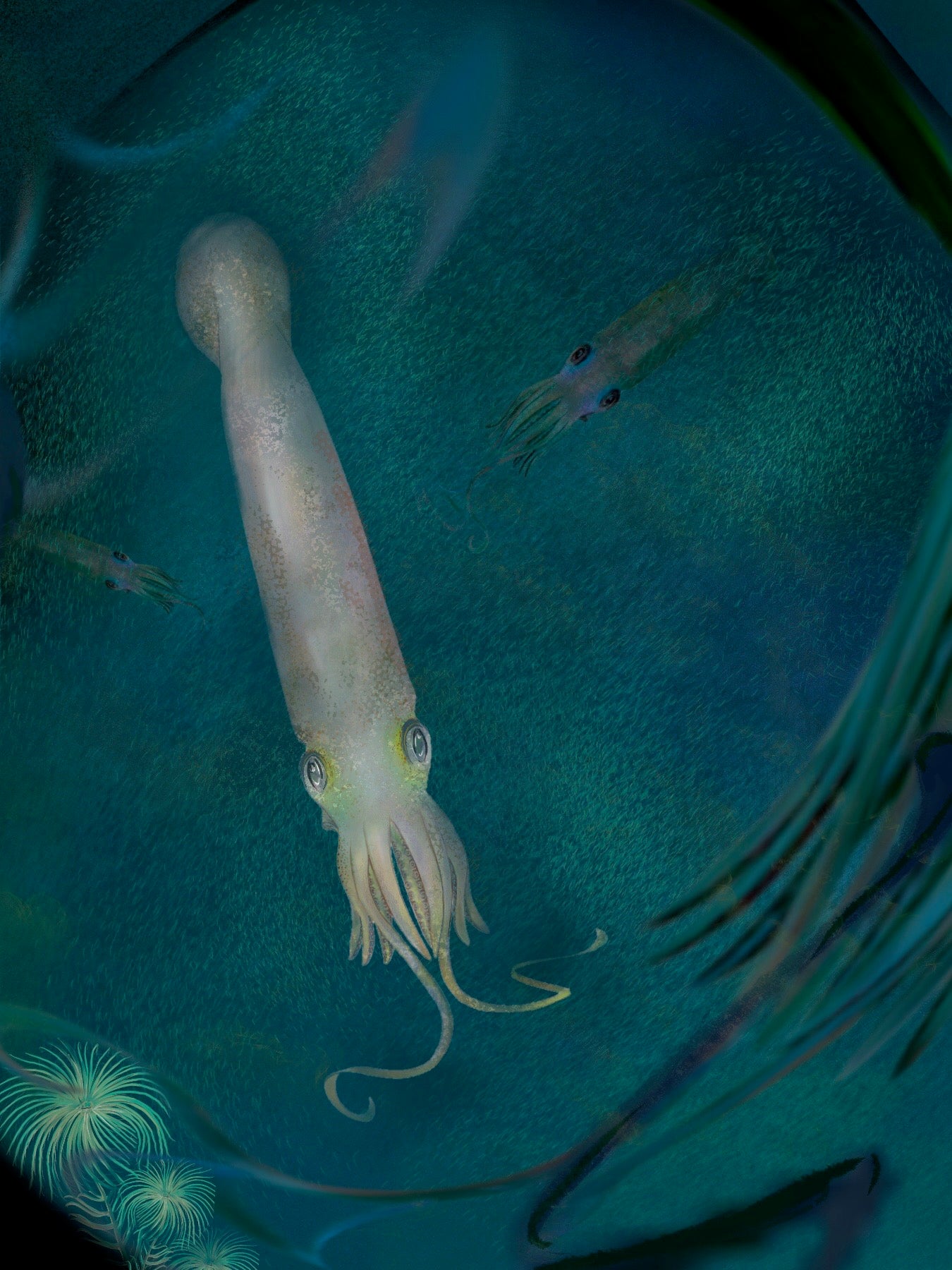A team of paleontologists has announced the discovery of a 328-million-year-old cephalopod with 10 arms. It’s an ancestor of modern octopuses and vampire squids and offers exciting insights into when and how these marine invertebrates diversified.
The fossil is named Syllipsimopodi bideni after President Joe Biden, who was inaugurated shortly before the researchers submitted their paper on this ancient cephalopod. While Biden is the oldest person to be elected president, this specimen is the oldest known vampyropod, predating other specimens by at least 83 million years. The team’s description of the fossil was published today in Nature Communications.
S. bideni is remarkable because it allows paleontologists to see so far back in time. The animal lived in what is now Montana, when the land was submerged beneath a bay. The continents had not yet collided to form Pangaea. The fossil reveals a time before the vampyropods began to lose limbs.
“Digit reduction is a common evolutionary phenomenon (consider horses, which have reduced their toe count down to one toe per foot),” said Christopher Whalen, a paleontologist at the American Museum of Natural History and the study’s lead author, in an email to Gizmodo.
“For whatever reason, the elongated arms we see in Syllipsimopodi were likely thinned into the filaments that we see in vampire squids and in other extinct vampyropods,” Whalen added. “These filaments were not worth the investment for octopods though, and they faced selective pressure to eliminate them entirely.”
S. bideni’s first name roughly translates to “prehensile foot,” as the researchers believe the specimen is the first cephalopod in the fossil record to have suckers on its arms. Cephalopod arms are evolved modifications of the molluscan foot — think of the slimy base of a snail — so the development of suckers on those arms (which were once feet) made the animals more dextrous.
The animal’s total body length was about 5.5 inches. Eight of its arms were about 0.75 inches long, but two appeared longer — stretching about 1.5 inches — and those bear a resemblance to modern vampire squids’ filaments: slender, retractable, mucus-covered structures they use to collect and devour marine snow. The structures the researchers interpreted as S. bideni’s suckers ran in pairs down the arms, and the fossil even appeared to contain a preserved ink sac, a darker splotch on the taupe stone.

“For a cephalopod, which is effectively a bag of water with very few hard parts, to become a fossil you need exceptional preservation of soft tissues, which is extremely, extremely rare,” said Thomas Clements, a paleontologist who specialises in the preservation of soft tissues, in an email to Gizmodo. “Overall, I think this paper is a really good step that will help refine our understanding of cephalopod evolution — and will hopefully invoke some interesting discussion in the cephalopod community.”
Clements added that, going forward, chemical analyses of the sucker structures would be useful to better understand what was soft tissue and what might be artifacts of fossilisation.
“We don’t really know exactly when suckers evolved, though they must have developed before Syllipsimopodi and before decabrachians (the group that includes squids, cuttlefish, bobtail squids, and Spirula) diverged from vampyropods (octopuses and vampire squid),” Whalen said. He noted that, because nautiloids don’t have suckers, the trait must have developed after those animals diverged from decabrachians and vampyropods.
Cephalopod fossil preservation is rare, but we’ve recently been blessed with several great finds. In 2020, a dramatic fossil showing a cephalopod-like animal consuming a squid was described, and, last year, a fossil in Germany showed a shark eating a squid eating a lobster, an uncommon find that our commenters classified as “the aquatic version of a Turducken.”
Also last year, the fossil of a vampire squid relative (and possible ancestor) from the Oligocene Epoch was found after being presumed lost for decades. S. bideni is 11 times older than that fossil, preceding the earliest dinosaurs by 100 million years. It is very old, has many arms, and we’re suckers for it.
More: Paleontologists Find Largest Jurassic Pterosaur Fossil Eroding on a Scottish Beach
